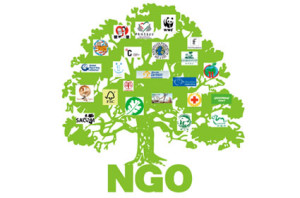Challenges NGOs Face
Non-governmental organizations (NGOs) are generally considered to be not-for profit groups acting independent of government to serve social causes. The term “non-governmental organization” was first used in 1945 by the UN to differentiate between governmental agencies and private organizations. Today, NGOs are visible and diverse, ranging from grassroots organizations to multi-million dollar oligarchs such as CARE, World Vision and Human Rights Watch.
NGOs play an essential role in the social field in the fight against poverty and social exclusion, yet operate under many constraints. Some of the challenges NGOs face are as follows:
Funding Issues
Being that NGOs are not for-profit organizations, the work performed in such an agency does not bring in money. Instead NGOs rely heavily on donations often resulting in an over-dependence on donor support. NGOs have to compete with each other for limited grant funds and aids. To receive the much needed support from donors, NGOs have to invest in creating successful media campaigns to get the word out. A lack of funds could mean a total standstill for projects.
Donor Influence
With increased competition amongst NGOs for limited donation, NGOs may be forced to align their values with those of their donors leading to conflicts of interest. Ideally, no amount of funding or aid should buy NGO silence. But in the real world, is that always the case? Sometimes who NGOs listen to depends on how dire their funding needs are. Some NGOs are considered “embedded” because they are controlled by the motives of the aid agencies (such as the government) that fund them. In a case like this, NGO programs become closer to the government than the people’s needs. The voice of the local partner diminishes, in turn, undermining the NGOs’ ability to remain independent.
In other cases, the maps and models of NGOs don’t fit the reality of the poor because they are drawn with timelines and budgeting plans in mind. However, true development takes way more time than funding periods.
Inefficient Management
For a long time, management was synonymous with business management but in the recent years, as the NGO sector expanded so did the need for management within such organizations. Poor management was recognized to be a major problem within the sector as a whole. Knowledge of good management varied widely, with some regions indicating very little understanding of why NGOs are required to have boards or what their roles and functions should be.
Effective NGO leadership also requires the ability to balance a range of competing pressures from different stakeholders in ways that do not compromise the organization’s identity and values. Many NGOs mismanage their resources, quite often with the involvement and encouragement of their boards that eat their NGOs resources. Finding employees can be difficult if you are not willing to pay them or provide allowances. You may not attract that right talent if you only rely on volunteers.
Communication Constraints
NGOs must consider two facets of communication constraints—internal as well as external communication. When it comes to internal communication, often there are very different perspectives among stakeholders making it difficult to find common ground. One way to break down such a barrier is to create opportunities where members swap roles. For instance, headquarter staff could go out in the field and the field staff could spend time in headquarters. This will build relationship among team members and help to broaden perspectives making communication easier.
The problem with external communication is that NGOs have to fight for donor attention as there is so much information overload out there. To overcome this issue, NGOs must use the most relevant tools and messages for maximum reach. In some cases, small NGOs don’t have the resources to run media campaigns to send a message to people whereas NGO oligarchs speak the development language though they may be completely detached from the cause at hand.



